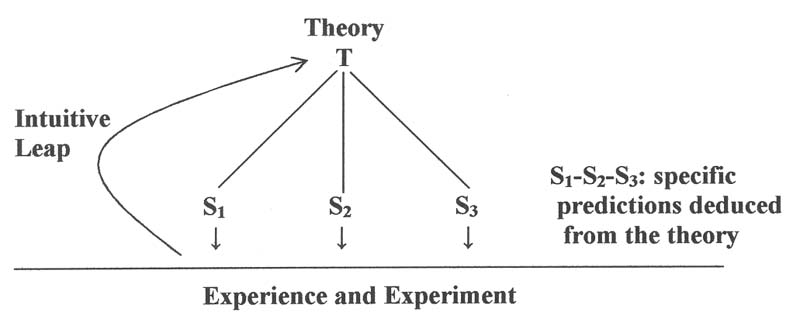What is the heart, or core, of science that makes it so powerful? With such dazzling feats as putting men on the moon, science, rather than religion, seems to be the realm where modern miracles routinely take place. One thing that clearly empowers science is its method. The work of science is done by two contrasting but complementary sensibilities: the theorist and the experimentalist. It is the dynamic interplay between these two that accounts for the amazing vitality of the scientific enterprise.
The experimentalist expands our senses, so that realities, hitherto unglimpsed, may be seen for the first time. The theorist expands our imagination, so that our reach may exceed our grasp (or what’s a “meta” for?). As in a dance where one dancer now takes the lead, and then the partner—one is the source of novelty for the other. And through reciprocal testing and analysis, they keep each other honest. A good example of how the experimentalist keeps the theorist honest is Galileo’s correction of Aristotle:
Aristotle theorized and came to the conclusion that a falling object falls with a constant speed, and that a heavy object falls faster than a light one. So great was Aristotle’s influence that this mistaken view prevailed for two thousand years. And then along came Galileo. By the simple experiment of using an inclined plane that slowed the motion of a “falling” ball as it rolled down the plane, Galileo was able to observe that a rolling ball clearly accelerated, and that a heavy ball rolled down the plane no faster than a light one. Modern experimental physics begins with Galileo.
Late in the 19th century experimentalists in their labs were making discoveries that revealed new realities, such as radioactivity (Becquerel, 1896) and the photoelectric effect (Hertz, 1887). Since Newtonian science could not explain these discoveries, it became evident as the 20th century opened that a new theoretical framework was called for. It was thus the work of experimentalists that impelled the formulation of a scientific revolution called Quantum Theory.
The defining moment for a theorist is the creative leap of imagination—from the concrete welter of observations and experience, he abstracts a general theory that unites them all in a higher synthesis. Rational thought, or reason, will then guide him in deducing specific theoretical results or predictions that logically follow from the theory. And it is here that the experimentalist takes over by devising concrete experiments that will either confirm or falsify the theory. If an experiment does falsify the theory, then it’s back to the drawing-board for the theorist.
If you note the italicized words in the preceding paragraph, you will find the very core (C.O.R.E.) of the method used by science: creativity, observation, reason, and experiment.
Albert Einstein, perhaps the greatest theorist in the history of physics, once drew a diagram to illustrate this method:

Creativity is crucial for the scientific enterprise; there’s simply no other way to make the imaginative leap from experience to theory. Reason alone will never make that leap. As Einstein said, “For the creation of a theory, the mere collection of recorded phenomena never suffices—there must always be added a free invention of the human mind . . .”
At the beginning of his career, Einstein was for a time under the intellectual influence of Ernst Mach, a staunch advocate of positivism in physics. (Positivism rejects any ideas not based on sense-data or verified by mechanistic operations.) Eventually, however, Einstein was persuaded away from this position, partly by arguments from Max Planck and, what was perhaps a stronger reason, by the success of his own new non-positivistic methods of thought. This was fortunate for Einstein and for physics. It was the considered opinion of physicist Heinz Pagels that Einstein would never have discovered the theory of relativity if he had remained a strict positivist!
Another great theorist in the 20th century, Alfred North Whitehead, had the gumption to not only challenge some aspects of Einstein’s theory of relativity but also to write a book wherein he expounded an alternate theory (The Principle of Relativity, 1922). Here is Whitehead’s description of his method of speculative thought:
“The true method of discovery is like the flight of an aeroplane. It starts from the ground of particular observation; it makes a flight in the thin air of imaginative generalization; and it again lands for renewed observation rendered acute by rational interpretation.” (Process and Reality, 5)
Note the similarities of this to Einstein’s diagram and to the general method of science that weds theory and experiment.
Like the left and right hemispheres of the brain, or like yin balancing yang, or like the symbol of medicine, the caduceus, with its two intertwining snakes in an upward spiral—these two, experiment and theory, are a paradigm for the power of complementarity.
The creative rhythm of science is thus a twofold process, a perpetual oscillation between Theory and Experiment, a yin-yang relationship, a flux of the concrete and the abstract.
HyC